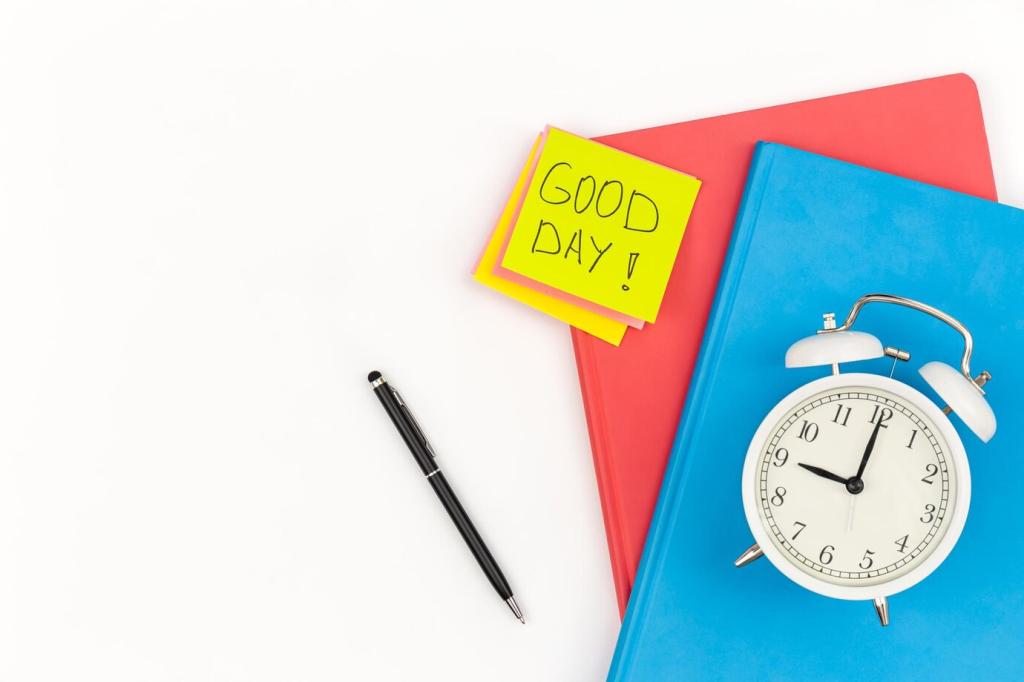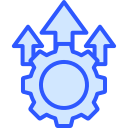Streamlining Daily Routines with Digital Tools
Setting Up Automated Reminders
Automated reminders in digital calendars are indispensable for managing multiple responsibilities. They allow users to set custom notifications for meetings, calls, or daily tasks, reducing the likelihood of forgetting important activities. Unlike traditional calendars, digital versions can alert you on your preferred device at any chosen interval before the event. This proactive approach ensures promptness and reliability, replacing anxiety with predictability. Over time, these reminders become critical allies in maintaining consistent routines, meeting obligations, and navigating busy schedules with confidence.
Synchronizing Across Devices
One of the standout advantages of digital calendars is their ability to synchronize updates across all your devices in real-time. Whether adding an appointment on your smartphone or updating a recurring event on your desktop, the information is accessible everywhere. This interconnectedness is essential for people who frequently transition between devices or work environments. Synchronization minimizes the risk of discrepancies and conflicting bookings, enabling a cohesive and consolidated overview of your schedule. As a result, it streamlines collaboration with colleagues and keeps personal and professional commitments seamlessly aligned.
Integrating with Productivity Apps
Digital calendars integrate effortlessly with numerous productivity applications, enhancing their functionality. By linking with task managers, email platforms, and project management software, users gain a unified ecosystem where appointments, deadlines, and upcoming tasks converge in a single interface. This integration eliminates the inefficiency of toggling between apps, saves time, and creates an organized digital workspace. The result is improved focus and a holistic overview of your workload, enabling smarter prioritization and smoother workflows.

Categorizing and Prioritizing Tasks
Task management applications give you a structured environment to categorize and prioritize your duties. Features like color-coded labels, folders, and tags help group similar tasks or projects, eliminating the clutter typical of scribbled paper lists. Prioritization tools, such as setting due dates or flagging urgent items, enable you to focus first on what matters most. This clarity brings order to bustling days, supports better decision-making, and prevents critical jobs from being overlooked, paving the way for consistently productive routines.
Collaboration and Delegation Features
Modern task management apps foster teamwork by offering collaborative functions. With shared task lists, group assignments, and real-time updates, team members stay informed and aligned. Delegation becomes seamless, as tasks can be assigned to individuals with relevant notes and deadlines. These features dissolve barriers to communication and ensure accountability, enhancing both work productivity and personal household management. Digital record-keeping also provides an audit trail, reinforcing trust and transparency among collaborators.
Tracking Progress and Achieving Goals
The ability to monitor individual and group progress is a major advantage of using digital task management tools. Visual indicators, such as progress bars or completion percentages, provide instant feedback and motivational boosts. Detailed analytics let you review completed versus outstanding tasks, identify bottlenecks, and refine strategies for future projects. This process supports momentum and continuous improvement, turning ambitious plans into achievable goals and making personal growth or project delivery more measurable.
Note-Taking Apps to Capture Ideas Instantly
The hallmark of a good note-taking app is the ability to record thoughts and information as soon as they arise. Whether it’s a fleeting idea, a critical meeting point, or a personal reminder, quick-jot features make it possible to capture it instantly from any device. This flexibility prevents inspiration from getting lost and reduces the risk of forgetting important details. Users can later refine or categorize these notes, creating a robust digital knowledge base that’s always a tap away.
As notes accumulate, organization becomes essential. Digital note-taking solutions offer advanced search functionality, allowing users to retrieve information quickly with keywords or tags. Folders, notebooks, and templates further streamline organization, making it easy to locate recipes, plans, or reference materials in seconds. Over time, this capability dramatically increases efficiency, saves time spent on manual searches, and adds value to your knowledge collection.
Unlike traditional notepads, digital note-taking apps often support rich multimedia content. Users can embed photos, videos, voice memos, and web clippings directly into notes. This multimedia integration enables more comprehensive documentation of ideas, meetings, or studies, catering to varied learning preferences and communication styles. As a result, the note-taking process becomes more dynamic, informative, and personalized, elevating how you capture and recall important information.

Previous
Next
Automating Repetitive Tasks for Increased Productivity
Workflow automation tools enable users to create chains of actions that are triggered by specific events. For example, you can automate the filing of emails, the generation of invoices, or the scheduling of social media posts. With rule-based triggers and customizable templates, these systems require minimal setup but yield significant time savings. By taking control of these repetitive tasks, you reduce the risk of human error and create smoother operational flows for both personal and professional routines.
Digital Health Tools for Wellness Management
Tracking Physical Activity and Fitness
Wearable devices and fitness apps digitally track your steps, workouts, and overall physical activity. Real-time feedback on movement, heart rate, or calorie burn motivates you to meet daily exercise goals. By providing visual progress reports and personalized suggestions, these tools encourage accountability and sustained health habits. Even moderate improvements in activity, guided by such feedback, can positively impact mood, energy, and routine consistency.
Scheduling and Reminding for Healthy Habits
Implementing healthy routines often hinges on consistency, and digital health tools excel at sending timely reminders. Whether it’s to drink water, take medication, or meditate, these scheduled prompts integrate seamlessly with daily life. Customizable timing and repetition settings maximize adherence, turning sporadic intentions into reliable actions. Reminders make it easier to prioritize self-care amidst busy schedules, enhancing overall wellness and productivity.
Stress Reduction and Mindfulness Apps
Mental well-being is as vital as physical health, and digital tools offer practical support for stress management. Meditation and mindfulness apps guide users through breathing exercises, relaxation techniques, and reflective practices. These sessions can be tailored to individual needs, helping to lower anxiety, improve focus, and restore balance. Over time, integrating such moments into your routine promotes a calmer, more productive mindset, directly supporting sustained personal and professional growth.
Meal Planning and Grocery Management Apps
Meal planning apps help organize breakfast, lunch, and dinner schedules for the week ahead. Users can select from curated recipes or input family favorites, generating structured menus tailored to dietary needs and preferences. The visual layout provides an at-a-glance overview, smoothing daily decision-making. Consistent meal planning reduces the temptation for unhealthy choices, promotes dietary variety, and saves time otherwise spent pondering what to eat.

Smart Home Devices for Automated Daily Routines
Automating Morning and Evening Routines
Smart devices can be programmed to handle everyday tasks as part of morning or evening rituals. Automated lighting, smart thermostats, and voice-controlled alarms adjust settings at specific times, creating comfortable environments that energize your day or promote restful sleep. This consistency reduces decision fatigue and helps establish positive habits, such as maintaining a regular sleep schedule or starting mornings with the right ambiance and information.
Managing Home Security with Digital Convenience
Smart locks, security cameras, and doorbell systems bring peace of mind and practicality to modern households. Remote access and real-time alerts make it easier to monitor home safety, grant access to visitors, or secure your property with a few taps on your phone. The integration of these systems provides streamlined management of entrances, enhances situational awareness, and reduces stress associated with traditional security measures.
Integrating Voice Assistants for Hands-Free Control
Voice-activated assistants such as Amazon Alexa or Google Assistant serve as central hubs for controlling smart devices, retrieving information, and managing routines. Users can set reminders, play music, adjust lighting, and receive news or weather updates, all without lifting a finger. The hands-free nature of voice assistants is a game-changer for multitasking and accessibility, enabling seamless coordination of daily tasks and contributing to a more responsive and efficient routine.
